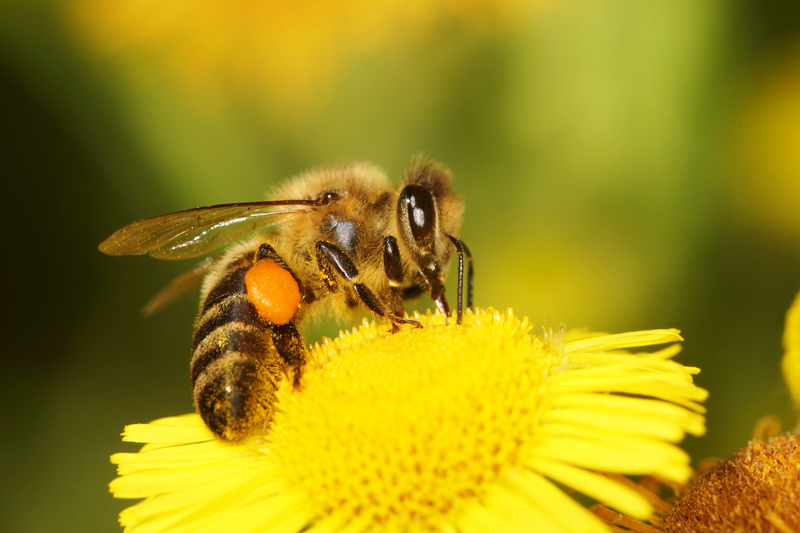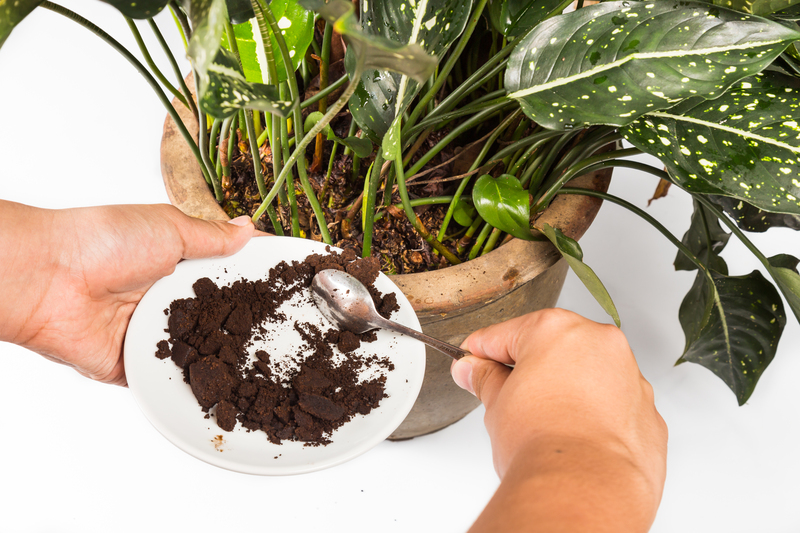Transforming Your Yard into a Child's Botanical Wonderland
Posted on 27/08/2025
Transforming Your Yard into a Child's Botanical Wonderland
Isn't it a joy to see children marvel at nature? For many parents, caregivers, and educators, transforming your yard into a child's botanical wonderland is an exciting opportunity to encourage outdoor play, inspire curiosity, and foster environmental stewardship. This comprehensive guide explores how you can convert your outdoor space into a magical, educational, and nature-rich environment your children will adore.
Why Create a Botanical Wonderland for Kids?
Children thrive in environments that stimulate their senses and provoke their imagination. Creating a child-friendly botanical haven offers a plethora of benefits:
- Encourages outdoor physical activity.
- Fosters curiosity in science and nature.
- Promotes mental wellbeing and stress reduction.
- Teaches responsibility through gardening tasks.
- Improves motor skills and promotes teamwork.
By transforming your yard into a child's botanical paradise, you inspire a lifelong love of the outdoors.

Planning Your Child's Botanical Wonderland
Every enchanting garden begins with a thoughtful plan. Consider these key elements when creating your botanical wonderland for children:
1. Involve Your Children
- Let your kids share their ideas and preferences.
- Allow them to help choose plants, features, and decorations.
- Assign them personal plant beds or garden sections.
2. Safety First
Childproof your garden:
- Remove toxic plants (like foxglove, oleander, or sago palm).
- Keep gardening tools, chemicals, and sharp objects locked away.
- Create clear, visible paths and avoid tripping hazards.
- Install protective fencing or barriers if needed.
3. Create Zones for Play, Exploration, and Relaxation
- Dedicated areas for exploration and discovery (e.g., a secret garden or fairy nook).
- Open spaces for play and running.
- Quiet corners for reading or observing wildlife.
Designing the Botanical Kid's Paradise
Transforming your yard into a child's botanical wonderland is all about layering sensory experiences, playful touches, and educational opportunities. Here's how to realize your vision:
Choose the Right Plants
- Edible Plants: Strawberries, blueberries, cherry tomatoes, snap peas, and carrots are perfect for tasting adventures.
- Fragrant Flowers: Lavender, sweet alyssum, mint, and lemon balm add delightful scents.
- Touch-Friendly Foliage: Lamb's ear, sage, ornamental grasses, and ferns offer diverse tactile sensations.
- Colorful Perennials & Annuals: Sunflowers, zinnias, marigolds, and nasturtiums brighten up any space.
- Native Plants: Support local pollinators, reduce maintenance, and provide year-round interest.
Tip: Choose resilient, easy-to-grow plants that can withstand enthusiastic play and occasional neglect.
Add Magical Features and Decor
Incorporate unique features to strengthen the enchanting, wonder-filled vibes of your child's botanical oasis:
- Fairy or Gnome Villages: Small figurines, houses, and painted stones can create whimsical worlds among the plants.
- Butterfly and Pollinator Gardens: Plant milkweed, bee balm, or coneflowers to attract butterflies, bees, and hummingbirds.
- Sensory Paths: Create walkways with different textures - smooth pebbles, sand, bark mulch, or stepping stones.
- Colorful Wind Chimes & Mobiles: Add musical and kinetic elements.
- Secret Hideaways: Use willow tunnels, teepees, or vine-covered arbors for private, shaded retreats.
Encourage Creative Play and Learning
- Outdoor Chalkboards: Mount chalkboards to fences for artistic expression.
- Mud Kitchens or Sand Play Areas: Facilitate imaginative, hands-on play.
- Gardening Stations: Set up child-sized benches, tools, and watering cans for their own gardening projects.
- Wildlife Observation Zones: Place bird feeders, bee hotels, or butterfly puddling stations for up-close learning.
Incorporating Educational Elements
Your child's botanical garden can double as a living classroom. Nature provides endless opportunities for experiential learning:
Plant Labels & Garden Journals
- Label plants with their names and fun facts.
- Encourage children to keep garden journals - they can draw, write, and document discoveries throughout the year.
Science Activities
- Grow plants from seeds, bulbs, or cuttings; observe germination and plant life cycles.
- Study insects and beneficial pollinators under a magnifying glass.
- Start a compost pile to learn about decomposition and recycling.
- Track weather and seasonal changes with a DIY rain gauge or thermometer.
Art and Creativity
- Make nature-inspired crafts (flower crowns, leaf rubbings, or painted rocks).
- Create temporary natural mandalas using petals, stones, and twigs.
Year-Round Engagement in Your Kid's Botanical Wonderland
Keep your child's interest alive through every season:
- Spring: Start seeds indoors, plant bulbs, and watch returning pollinators.
- Summer: Harvest fruits and veggies, build bug hotels, enjoy water play with sprinklers.
- Autumn: Collect colorful leaves, plant autumn flowers, observe migrating birds.
- Winter: Embrace backyard bird watching, make ice ornaments, prep garden beds for spring.
Essential Tips for Maintaining a Child's Botanical Playground
- Keep plantings simple, diverse, and age-appropriate.
- Choose durable hardscaping and child-safe materials.
- Design pathways for easy navigation and movement.
- Keep an eye on invasive species and allergens.
- Rotate play elements to keep the garden exciting and fresh.
Inspiration: Sample Layouts of Children's Botanical Spaces
1. The Mini Nature Reserve
- Wildflower meadow corner with footpaths
- Log piles and bug hotels for observing insects
- Small pond or water feature (with safety precautions)
2. Fairy Tale Garden
- Winding stepping stone path leading to a willow tunnel or teepee
- Clusters of fragrant and whimsical flowers (foxgloves, snapdragons, pansies)
- Fairy village decor, twinkle lights, and secret seating nook
3. Edible Exploration Zone
- Raised vegetable beds at child height
- Berries trained along a trellis, and a strawberry patch
- Outdoor kitchen with pots, pans, and a mud pie station
Encouraging Connection and Responsibility
Children develop a sense of agency and pride when they're responsible for a part of the garden:
- Let each child care for "their" plant or plot.
- Involve children in simple chores: watering, weeding, or harvesting.
- Celebrate successes (a first bloom, a bumper crop, a rare butterfly sighting).
- Share garden produce and flowers with friends, family, or neighbors.
Overcoming Common Challenges
- Pests: Use child- and pollinator-safe controls such as hand-picking, soap sprays, or encouraging natural predators.
- Mistakes: Embrace mix-ups as learning opportunities. Not every seed will sprout, and that's okay!
- Boredom: Introduce new themes, swap out features, or add seasonal activities so the garden always offers something new.
Budget-Friendly Ways to Create a Botanical Paradise
- Start small: Even a few pots or a raised bed can become a magical child's plot.
- Upcycle: Use pallets for planters, old boots as quirky flowerpots, tree stumps as seats or tables.
- Swap or share seedlings: Exchange plants with neighbors or at community swaps.
- DIY decor: Let kids paint rocks, make wind chimes, or craft homemade garden signs.

Resources to Spark Imagination and Engagement
- kidsgardening.org - Activities, grants, and ideas for children's gardens.
- National Wildlife Federation: Garden for Wildlife - Attracting pollinators and wildlife to your garden.
- Childhood by Nature - Nature play inspiration for families and schools.
Conclusion: Cultivating Memories, Curiosity, and Wonder
Transforming your yard into a child's botanical wonderland isn't just about plants and paths; it is about nurturing curiosity, creativity, and a sense of belonging in nature. With thoughtful planning and plenty of kid-friendly touches, your garden will become a playground, classroom, and sanctuary for the whole family.
Let your garden grow alongside your children--evolving to fit their interests as they learn and explore. Be patient, embrace the unpredictability of nature, and most importantly, have fun together as you create a magical outdoor space. Whether your yard is a sprawling lawn or a cozy container garden, you have the power to foster joy, discovery, and stewardship for generations to come.
Begin your journey today and watch a world of wonder bloom right outside your door!

